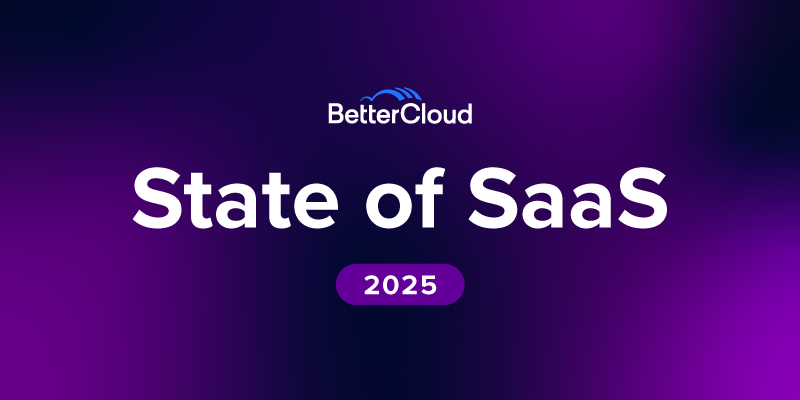A Day in the Life of a SaaSOps Leader
August 7, 2021
6 minute read

It’s time to pull back the veil of secrecy around SaaSOps practitioners. While it’s no secret that there’s an incredibly engaged community of SaaSOps pros, folks who are less familiar with the framework have long wondered what they do every day. More importantly, what unique priorities do they have—and how do they think about building IT teams?
To find out, we interviewed Justine Bienkowski, former director of SaaSOps and corporate IT at BetterCloud, to learn more about her typical day at work. Bienkowski emphasized that her IT team strives to be more than mere ticket takers who keep the lights on. While this is a high-level overview of her approach to work, read on to find out what she and her team handle on a day-to-day basis.
Editor’s Note: This transcript has been edited lightly for clarity.
What’s a typical day like for you?
Bienkowski: It usually begins with daily or weekly meetings, including one-on-ones with my direct reports to see how they’re doing and if they need anything from me. With everyone being remote, it’s important to have face time with them. I meet with my peers on a weekly or bi-weekly basis. I also meet with stakeholders across different departments to build up trust and rapport. I want to make sure that they feel comfortable coming to me when they have new initiatives.
What do you discuss in your meetings with your stakeholders?
I ask about the initiatives they’re going to work on over the next six months that I might be able to help with. Specifically, I’ll ask about challenges each team has experienced recently or if there’s anything that IT can do better.
I have a list of questions that I cycle through. One of them is, “How are you doing as a human being?” It’s important to remember we’re all human, so I sincerely want to know the answer to this question from everyone I meet with.
Tell me more about strategic planning meetings.
We have weekly IT team syncs where we discuss solutions, make decisions, and ensure alignment. We want to be prepared if someone’s going to be out of the office or we have an event coming up.
For example, we’ll look at the company calendar and look for events like an end-of-quarter celebration or a board meeting. That will prompt us to make sure someone is available to go to the office and ensure that everything is set up in advance, which helps us avoid scrambling to get things together the day of the event.
Our primary tool that we review in our meetings is our team sync agenda. We always start by going over our objectives and key results (OKRs) and put in any updates. Then I’ll enter the updates into Ally, which we use to track and communicate our progress to the rest of the company.
Additionally, we review our vulnerabilities and concerns. Recently, we discussed the implications of reopening the offices and our IT strategies around that. I presented a deck that I would be sharing at an all-hands meeting, and asked the team to verify the content and suggest any adjustments.
And then there are cross-functional project check-ins for when I’m working on a project with another team, such as our Business Systems team. These meetings usually come up when we need to come together to make a decision or just verify we’re on track.
What’s an example of a joint project with Business Systems?
Polly surveys are top of mind for me right now. This is a new app that we use to collect anonymous feedback about meetings and gauge how we can make them more productive. I’ve been in a lot of meetings about survey feedback. It is truly a cross-functional effort with IT, Business Systems, and the Data team.
The Data team is working on creating dashboards for us to view the data, which has required us to come together to hash out a lot of decisions. When we started, the surveys were going to senior leadership, but now we’re extending them to the whole organization. We’re hearing from people that they get too much feedback and are overwhelmed. So we’re thinking, “Should we change the number of questions asked? Should we change the criteria for which meetings get surveyed?”
And how is Business Systems helping with that?
They run an application called MuleSoft. It’s an integration platform for SOA, SaaS, and APIs. We started by writing a Google Apps script, but it wasn’t super-scalable to keep editing the script for this project, so instead we’re using Mulesoft as our enterprise automation tool to run the app. Now we can adjust any criteria we want more easily, but Business Systems had to help us build that.
I didn’t realize how cross-functional those internal surveys were and that the Data team was building the dashboards. That’s really cool.
Yes, it is a big effort.
I heard you have a regular “Reinvent IT” meeting. That sounds big.
Across the CIO teams, we have a concept for reinventing IT and changing it from a functional, specialist, operational, reactive organization to becoming a proactive organization focused on automation and embedding with different teams. We’re fostering the democratization of ideas.
We meet every week and review initiatives that we want to accomplish because we think they could be impactful to the organization. We’re always asking ourselves what the meaningful milestones are and when we can start making that transformation with our teams.
What’s an example of that? Is it things like tagging Zendesk tickets to see which ones can be automated?
Yes, exactly. We’re always working to bring down the click counts. Onboarding takes IT roughly 20 clicks to create a new user. So we’re working on Jamf Connect to secure identity and access to resources so people can log into their computers using their Okta accounts (our identity provider). We’ve also rolled out Automox (an automated patch management tool) to update their computers with minimal manual intervention. The goal is to set things up so that after we ship a laptop to someone’s house, all they need to do is log in with their Okta credentials to finish the process and get to work.
So you all meet every week. Between meetings, what are you working on?
I’m always asking myself what my team can do that makes a meaningful impact on the organization.
I look at tickets and I think, “Okay, I’ve seen that several people have submitted a similar request around this. Is there a different way of solving this so people wouldn’t even have to open that ticket?”
For example, if three new hires ask to be added to a particular Slack group or channel, we’ll try to automate that business case and add it to the workflow for new hires that join the same team. Additionally, I spend a lot of time on the health of my team. Are they engaged? Are they burned out? How can I unblock things for them? How can I serve as a protector of their time?
Tell me more about how you manage your team’s burnout.
For a support organization, people in and out of the organization are depending on my team to give them the tools to do their jobs. Sometimes we need to figure out how to handle all those requests—and sometimes we can’t. So then we need to set expectations, which can be challenging, especially when something breaks.
A recent example is the office door in Atlanta. The controller in the access system is broken right now, so people can’t get up to the office. So instead of working on automation projects, we have someone sitting in the office waiting for a service team to fix it. You can’t schedule for something like that, but you know something will bite you sooner or later.
Oh, wow.
That doesn’t create burnout, per se, but there’s constant context switching in IT. Having to work on something that’s not necessarily what you wanted to work on can feel overwhelming. I might observe, “Oh, this person hasn’t taken any days off recently. I should ask if they need to take a day off, or make sure they’re doing okay.”
You pay attention.
I try. It can be a very punishing job because so much of our work is done behind the scenes and people don’t realize how their lives are being impacted. And it’s very, very rare for someone to say, “Thank you IT for doing this.” It’s usually, “Oh, this thing’s broken.”
Isn’t that a truism? If IT is doing their job right, you don’t know that they’re there.
Yes. Sometimes that can be hard for people on my team—and I think people also forget that IT folks have feelings, especially when they get locked out of the office or their laptop.
If they’re feeling disengaged, how do you get them more engaged?
It’s different for every person, but I try to figure out what kind of work they like to do and how to get them more of it. I also like to make sure they’re on board with whatever they’re working on.
I like to think I am a very democratic leader. I don’t want to be the person always saying, “You have to do this now.” Because then they’re not going to care. Plus, I might not know the right answer, because I’m not in the weeds anymore.
So when we’re planning, I engage the team and make sure everyone’s part of it. They must be part of the decision-making process for what they’re doing. Because if they’re not, they’re just going to be checked out.
I’ve heard there’s a mandate for automation every quarter.
I hate the word “mandate.” It sounds like it’s coming from a dictator. The idea is to measure how much automation work we’re doing. We started tagging “automation work” on Jira and discovered that we were doing a certain amount of story points of automation each sprint. We thought we’d choose a number to strive towards for every sprint.
You’ll try to bump it up a little bit, every quarter?
We will. And we’ll see how it goes.
Nobody wants to just be clicking the same button over and over again. That’s boring! So not only does automation benefit the company, but it also benefits the team because then they’re working on more creative solutions, which is ultimately more interesting.
To learn more about how BetterCloud can help you discover, manage, and secure your growing library of SaaS applications, request a demo.






